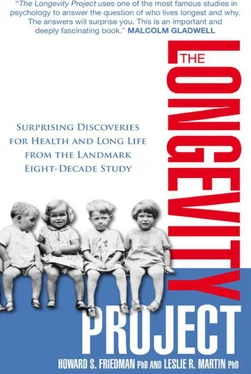The Mysterious End of Douglas Kelley
Douglas McGlashan Kelley—one of the publicly identified Terman participants—was also one of the most interesting and baffling. Kelley grew up in San Francisco, was discovered by Dr. Terman for his study, and went to college at the University of California in Berkeley. He became a well-known psychiatrist and a Berkeley professor. He was an energetic and well-adjusted child, though less conscientious than most. Although Kelley was empathic and sensitive to the feelings of others, there was nothing remarkable in his childhood that would portend the dramatic turns his life would take.
Douglas Kelley loved jokes and magic. In fact, in 1941 Time magazine featured him in an article as a psychiatrist who taught parlor tricks to his patients. In 1942, at age twenty-nine, Dr. Kelley was called to the U.S. Army Medical Corps and sent to Europe to serve as a forensic psychiatrist, his specialty. When the war ended, he received a unique assignment. He was attached to the International Military Tribunal in Nuremberg, Germany, where Nazi war crimes trials were being prepared. His job was to study some of the highest-ranking captured Nazis, including the foreign minister Joachim von Ribbentrop, and Hermann Goering, one of the most infamous and powerful Nazis.
Dr. Kelley administered psychological assessments such as the Rorschach inkblot test to the imprisoned Nazi leaders. Kelley was a Rorschach expert. Fascinated with their views, he also spent many hours talking with them, trying to understand how they could commit such awful crimes against fellow human beings. He decided that the Nazi leaders were mentally competent to stand trial. Eventually Von Ribbentrop and other top Nazis were hanged, but Hermann Goering secretly swallowed potassium cyanide the night before he was to be executed.
After the war Douglas Kelley became a criminologist as well as a professor. He testified in court about the mental state of those accused of crimes, similar to his work in Nuremberg. He even broke new ground in the psychiatric use of drugs like Sodium Pentothal as a potential truth serum. Dr. Kelley wrote a book called 22 Cells in Nuremberg . Oddly, he also collected Nazi memorabilia.
On New Year’s Day in 1958, Douglas Kelley suddenly killed himself at home in front of his family. He was just forty-five years old. His method of suicide was striking: Dr. Kelley killed himself by swallowing cyanide. The next day, the New York Times quoted police as saying that the poison capsule “was one of several souvenir capsules Dr. Kelley had brought home from Nuremberg. The capsules had been discovered on Hermann W. Goering, who committed suicide by taking a similar capsule on October 16, 1946, two hours before he was scheduled to be hanged.” 27 27 For a brief biography of Dr. Douglas Kelley, see University of California: In Memoriam , 1959, “Douglas McGlashan Kelley, Criminology: Berkeley.” See also “Mysterious Suicide of Nuremburg Psychiatrist,” San Francisco Chronicle , p. A17, February 6, 2005. The New York Times article of January 2, 1958, is titled “U.S. Psychiatrist in Nazi Trial Dies,” p. 18.
No one ever figured out for sure why Douglas Kelley, a successful doctor, suddenly killed himself, leaving a loving wife and three young children. (Paradoxically, in a memorial tribute to Kelley after his death, his colleagues at the University of California wrote of “his characteristically jovial humor.”) But a reasonable guess would be that as a young adult, he came to know that something about the world was terribly wrong. A sensitive person forced to face the worst of human horrors up close, he would come to see many things as far more ominous and catastrophic than would the average person. He knew firsthand how evil and scheming even educated individuals could be. Although he was outwardly successful for years after this life-changing experience, his sense of order, agency, and meaning had been shattered.
The Terman Women Who Ended It All
Our collaborator Carol Tomlinson-Keasey spearheaded a fascinating investigation of suicide, focused on eight women in the Terman sample who were definitively confirmed to have killed themselves. 28 28 For Dr. Tomlinson-Keasey’s study of these eight women see C. Tomlinson-Keasey, L. W. Warren, and J. E. Elliott, “Suicide among Gifted Women: A Prospective Study,” Journal of Abnormal Psychology 95 (1986): 123-30.
There may well have been additional suicides among the Terman women—some of the additional deaths by drug overdose were probably really suicides and not accidents. But the strongest conclusions can be made by examining those who had “suicide” listed as the cause of death on their certificates, or who had left suicide notes.
Men generally prefer guns or other violent means for taking their own lives, whereas women often turn to drugs. More than half of the confirmed female suicides among the Terman participants were by drug overdose (most often by a fatal dose of barbiturates), but there was also the occasional gunshot and carbon monoxide poisoning. Most of the suicides occurred when the women were in the prime of life—between thirty and forty-four years old. What would have led these very bright women to kill themselves? Was it an attempt to escape constant pain, anxiety, or depression by departing to a better place? Was it a very moody, impulsive temperament that led to a spur-of-the-moment decision to end it all? Was it sparked by the loss of a loved one in their lives?
In order to determine which factors were most relevant to suicide, proper comparison groups were needed. One was a matched group of women from the Terman sample who had died at the same ages (within one year) as the suicides, but from natural causes. This matched group allowed an evaluation of the typical life path of someone who died of cancer, for example, as compared to someone who swallowed a bottle of sleeping pills.
The second comparison group consisted of randomly selected female Terman subjects who lived at least until 1964, the year when the last of the scrutinized suicides occurred. This group allowed investigation into whether there might be some factors that distinguished women who died prematurely—whether by suicide or by illness—from women who survived into later life.
When we do exploratory research of this type, we want to find the relevant predictors, but we don’t want to capitalize on chance and find what was just a random quirk, never to be found again. The problem is, the more comparisons you make, the more likely you are to find some differences that came about only by chance and aren’t meaningful. That is, if researchers compare thousands of variables across the three groups of Terman participants—suicides, early natural deaths, and those who lived into later life—they would find some variables that differ substantially between the groups just by chance. To avoid this, the solution is to focus on aspects and characteristics, dealt with in other studies, that are either suspected or known to be associated with suicide.
The first of those variables is physical health. The next is stress: for this the researchers used a measure of childhood stress, a measure of adulthood stress, a coding of whether the participant had lost her father before she was twenty (a known risk factor for girls’ mental health), and a mental health index developed by Dr. Terman and his coinvestigator Melita Oden. Then came a combined measure of temperament: in 1940, were the women reporting that they were moody, unhappy, impulsive, emotional, lacking self-confidence, or feeling inferior? Finally, the researchers applied scores for what the suicidologist Edwin Shneidman called signatures of suicide—relevant elements of mental health that increase the risk of suicide. These include depression, substance abuse, anxiety, instability, and past attempted suicide.
Читать дальше











